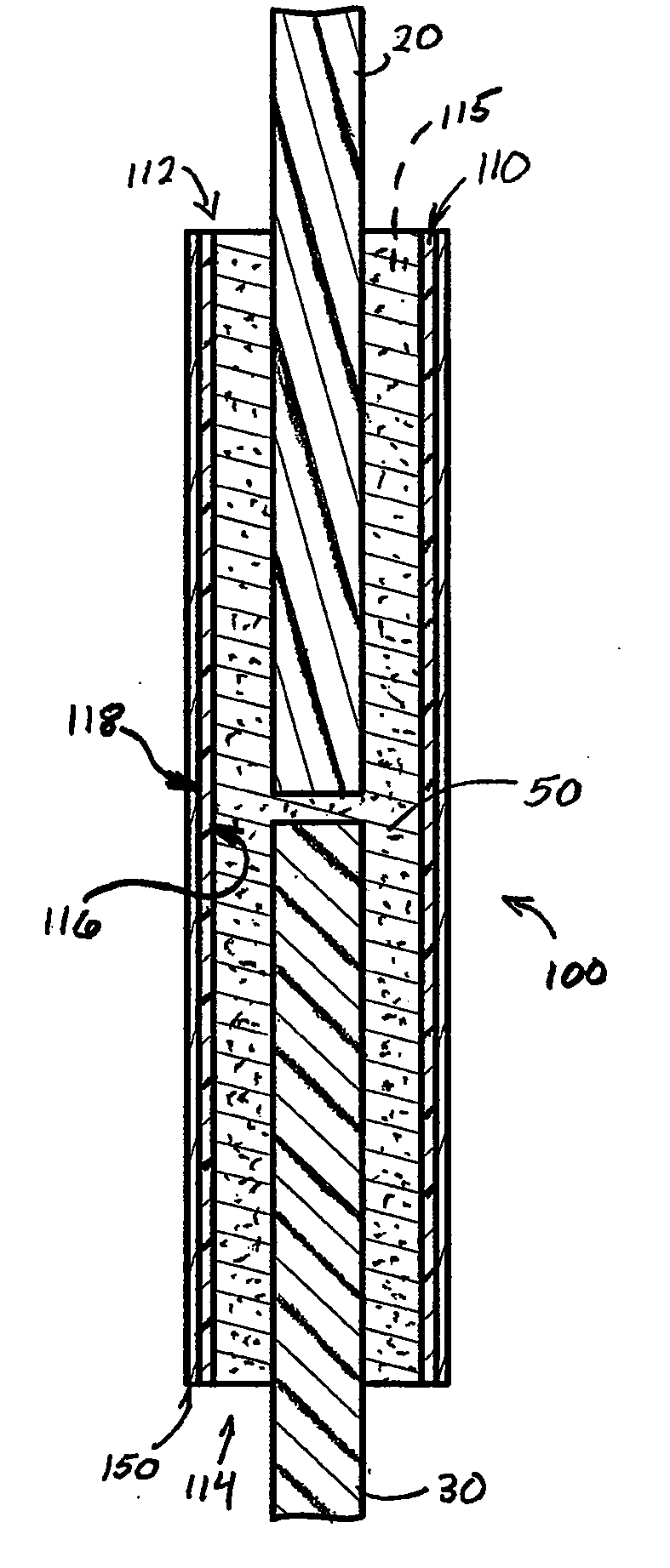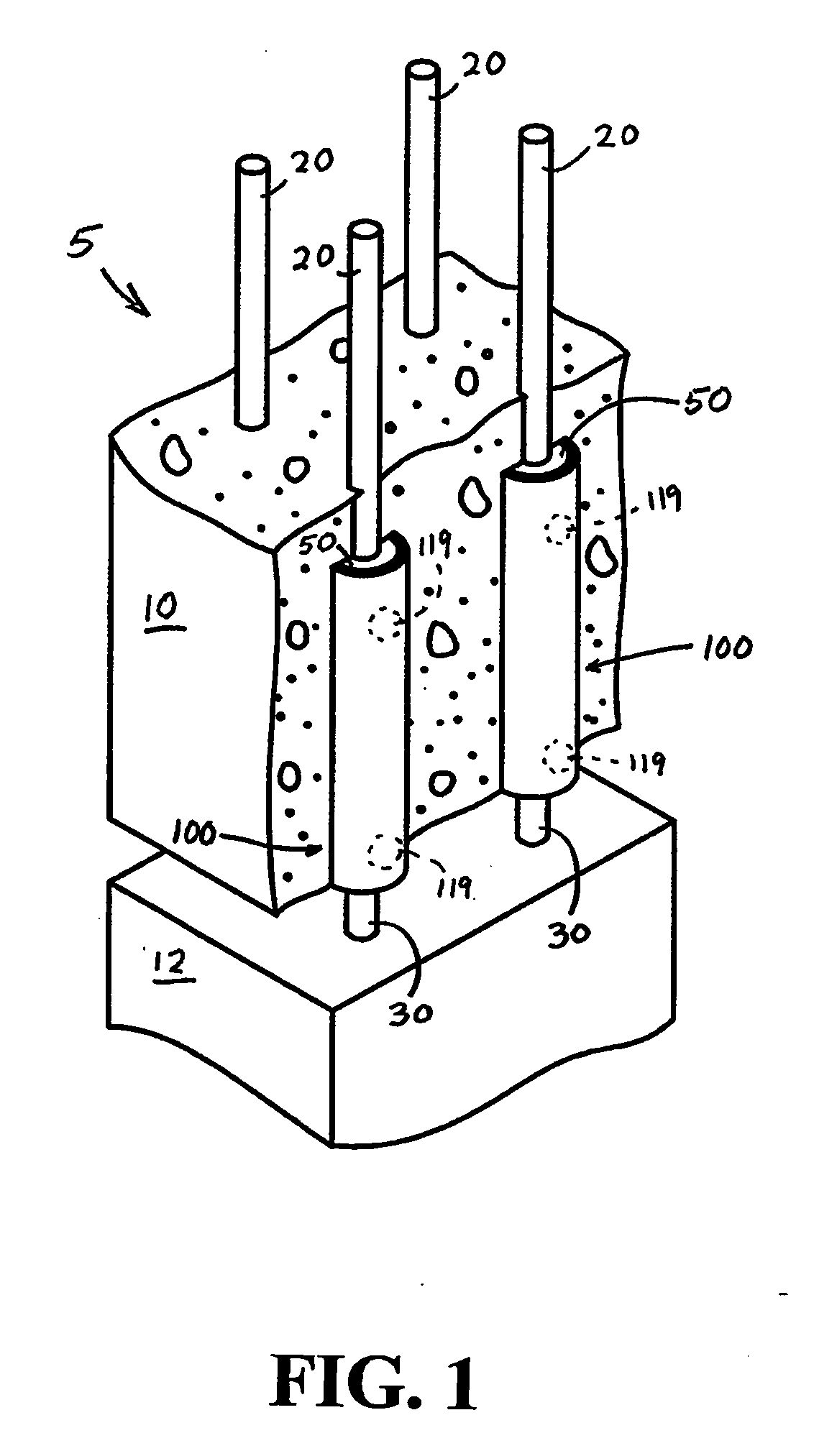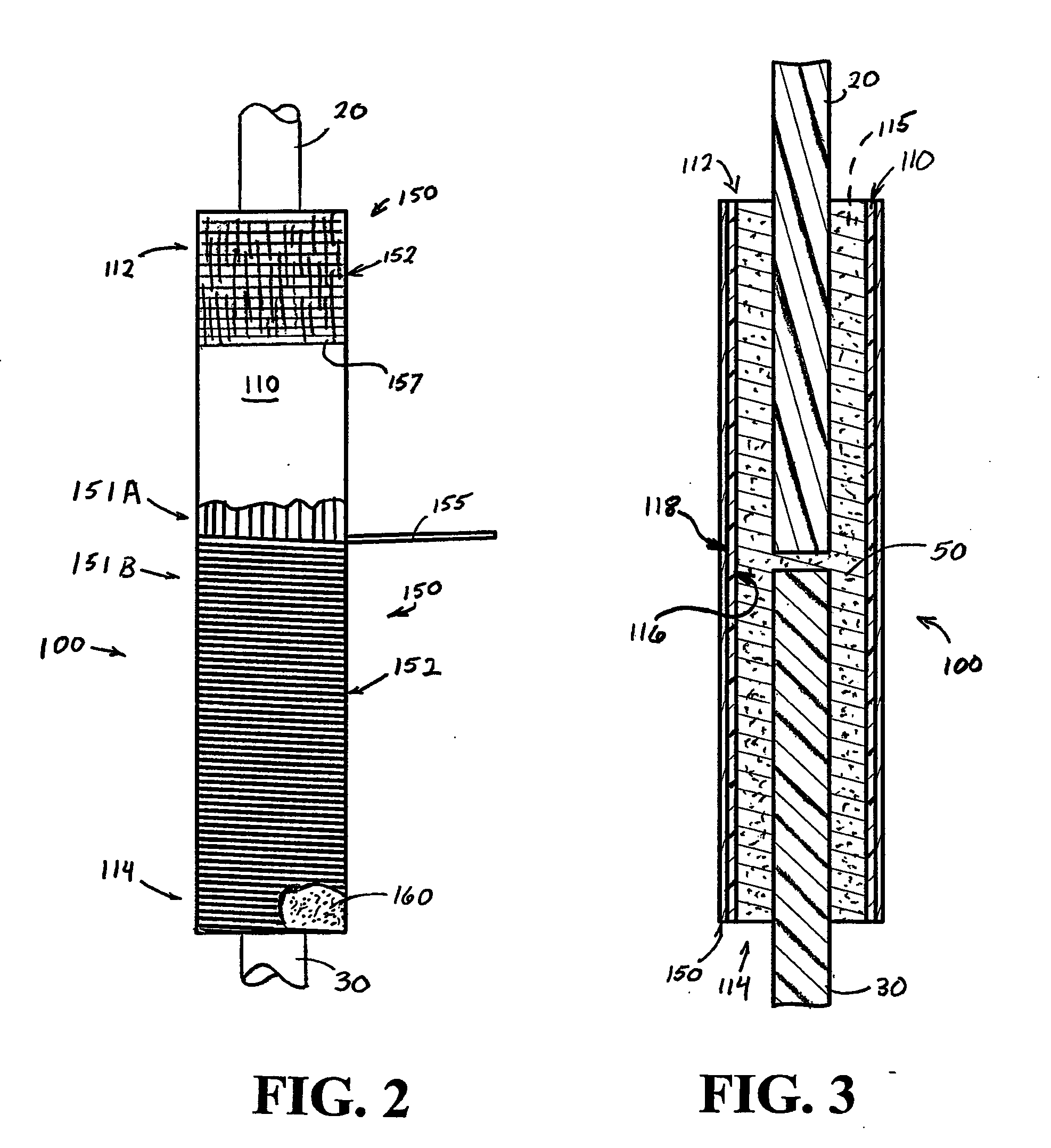Splice System for Fiber-Reinforced Polymer Rebars
- Summary
- Abstract
- Description
- Claims
- Application Information
AI Technical Summary
Benefits of technology
Problems solved by technology
Method used
Image
Examples
Embodiment Construction
[0022]Referring now to FIG. 1, the present invention provides a splice system for connecting fiber-reinforced polymer rebars, e.g., system 5, which facilitates joining multiple precast concrete components together by utilizing only non-metallic materials in the various concrete reinforcing components.
[0023]System 5, as illustrated, is used for joining an upper precast concrete component 10 to a corresponding lower precast concrete component 12, both of which were cast, poured, or formed off site. Although upper and lower precast components 10, 12 are shown in a vertical arrangement, it is, of course, appreciated that the system 5 may be implemented for joining concrete components in any suitable arrangement that is dictated by design considerations of an end structure in which such concrete components are part(s).
[0024]Upper and lower precast concrete components 10, 12 include fiber-reinforced rebar, e.g., rebars 20, 30 that are cast thereinto. Rebars 20, 30 are cast within the conc...
PUM
| Property | Measurement | Unit |
|---|---|---|
| Diameter | aaaaa | aaaaa |
| Length | aaaaa | aaaaa |
| Temperature | aaaaa | aaaaa |
Abstract
Description
Claims
Application Information
 Login to View More
Login to View More - R&D
- Intellectual Property
- Life Sciences
- Materials
- Tech Scout
- Unparalleled Data Quality
- Higher Quality Content
- 60% Fewer Hallucinations
Browse by: Latest US Patents, China's latest patents, Technical Efficacy Thesaurus, Application Domain, Technology Topic, Popular Technical Reports.
© 2025 PatSnap. All rights reserved.Legal|Privacy policy|Modern Slavery Act Transparency Statement|Sitemap|About US| Contact US: help@patsnap.com



